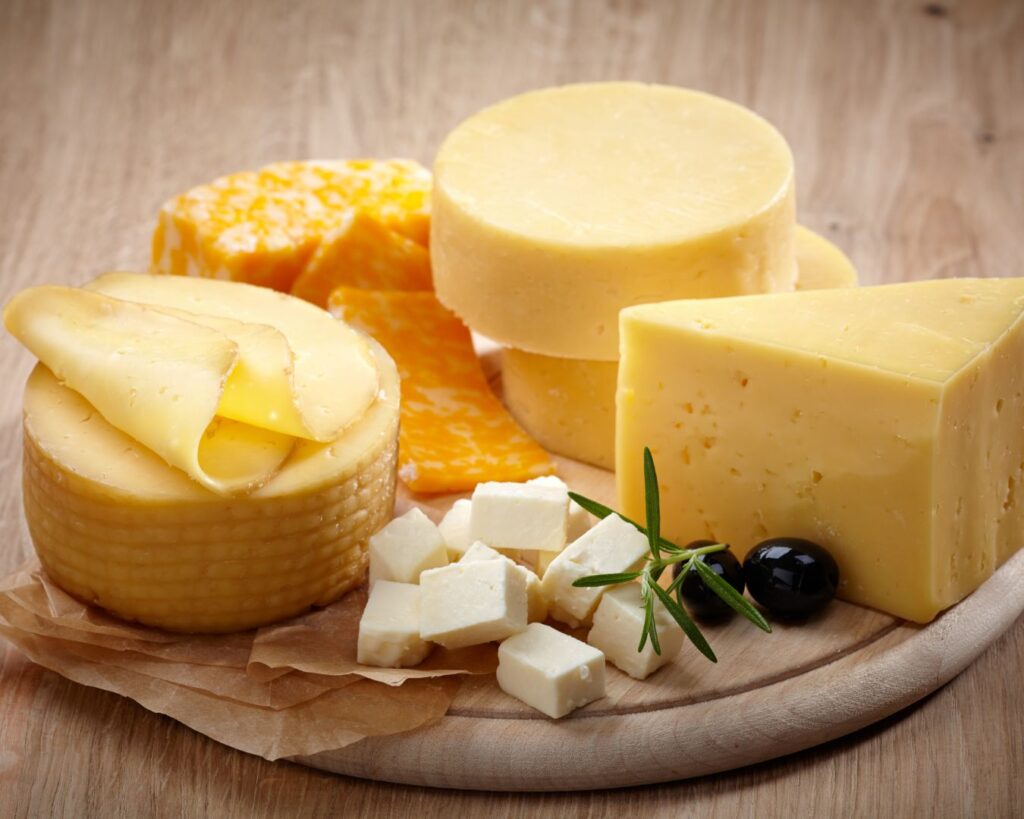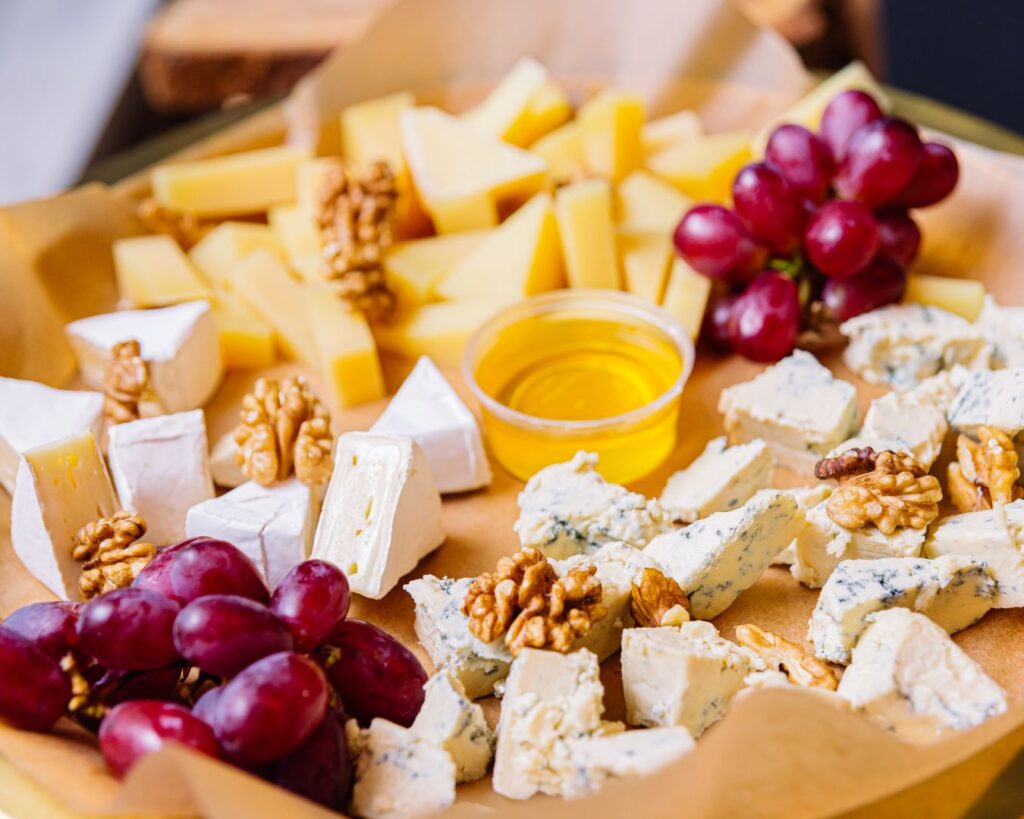A Guide to Different Types of Cheese and Their Culinary Uses
Cheese is a versatile and beloved ingredient found in cuisines all around the world. With so many varieties available, each with its unique flavor, texture, and aroma, knowing how to use them can elevate your culinary creations. Whether you’re a cheese connoisseur or just looking to expand your palate, this guide will introduce you to different types of cheese and how to best incorporate them into your cooking.
Fresh Cheeses
Characteristics: Fresh cheeses are typically soft, creamy, and have a mild flavor. They are not aged and have a high moisture content.
- Examples: Ricotta, Cottage Cheese, Cream Cheese, Mascarpone, Feta
- Uses: Fresh cheeses are often used in spreads, dips, and salads. Ricotta is excellent in lasagna, stuffed shells, and desserts like cannoli. Cream cheese is the base for cheesecake and can be spread on bagels. Feta, with its salty tang, is perfect for Greek salads, sandwiches, and baked dishes.
Soft-Ripened Cheeses
Characteristics: These cheeses have a soft, often bloomy rind with a creamy interior. They are aged for a short period, allowing the flavors to develop while maintaining a soft texture.
- Examples: Brie, Camembert
- Uses: Soft-ripened cheeses are typically enjoyed on their own or with fruit, nuts, and crackers. They can be baked for a warm, gooey appetizer or added to sandwiches and salads for a creamy texture.
Semi-Soft Cheeses
Characteristics: Semi-soft cheeses have a smooth, sliceable texture and mild to moderately strong flavors. They are slightly aged and have a higher moisture content than harder cheeses.
- Examples: Gouda, Havarti, Munster, Monterey Jack
- Uses: Semi-soft cheeses melt well, making them ideal for grilled cheese sandwiches, quesadillas, and burgers. They are also great for snacking, adding to charcuterie boards, or slicing into salads.

Hard Cheeses
Characteristics: Hard cheeses are aged longer, resulting in a firm texture and more concentrated flavors. They have a low moisture content and can range from mild to sharp in taste.
- Examples: Parmesan, Pecorino Romano, Asiago, Manchego
- Uses: Hard cheeses are commonly grated over pasta, soups, and salads to add a burst of flavor. Parmesan and Pecorino Romano are essential for Italian dishes like spaghetti carbonara and Caesar salad. Manchego pairs beautifully with cured meats and fruits on a cheese board.
Blue Cheeses
Characteristics: Blue cheeses are known for their distinct blue or green veining, created by the mold Penicillium. They have a pungent aroma and strong, tangy flavor.
- Examples: Roquefort, Gorgonzola, Stilton, Danish Blue
- Uses: Blue cheeses add a bold flavor to dishes and are often crumbled over salads, paired with fruit (especially pears and figs), or used in sauces. Gorgonzola is excellent in creamy pasta dishes, while Roquefort shines in salad dressings and on steak.
Washed-Rind Cheeses
Characteristics: Washed-rind cheeses have a strong, sometimes funky aroma, resulting from the process of washing the rind with brine, beer, wine, or spirits during aging. This encourages the growth of bacteria that give the cheese its characteristic flavor.
- Examples: Limburger, Taleggio, Époisses
- Uses: These cheeses are best enjoyed with crusty bread and a glass of wine or beer. Their bold flavors can also be used in gourmet sandwiches, or as the star of a cheese platter.

Processed Cheeses
Characteristics: Processed cheeses are made by blending natural cheeses with emulsifiers, preservatives, and sometimes additional ingredients like milk or cream. They have a uniform texture and a longer shelf life.
- Examples: American Cheese, Velveeta, Cheese Spread
- Uses: Processed cheeses melt smoothly, making them ideal for creamy sauces, dips, and classic American dishes like grilled cheese sandwiches and mac and cheese.
Goat Cheeses
Characteristics: Goat cheeses, or chèvre, are made from goat’s milk and have a tangy flavor that can range from mild to sharp. They can be fresh, aged, or semi-soft.
- Examples: Chèvre, Bucheron, Humboldt Fog
- Uses: Fresh goat cheese is perfect for spreading on crackers or adding to salads and pizzas. Aged varieties can be crumbled over dishes or served on a cheese board. Goat cheese pairs well with honey, nuts, and fruit.
Smoked Cheeses
Characteristics: Smoked cheeses are infused with a smoky flavor during the aging process, either by being smoked over wood chips or by adding liquid smoke.
- Examples: Smoked Gouda, Smoked Cheddar, Provolone
- Uses: Smoked cheeses bring a rich, smoky flavor to sandwiches, burgers, and pasta dishes. They’re also delicious in omelets, on pizzas, or served with charcuterie.
Whether you’re crafting a gourmet meal or simply enjoying a snack, understanding the different types of cheese and their uses can enhance your culinary adventures. From the creamy texture of fresh cheeses to the bold flavors of blue and smoked varieties, there’s a cheese for every palate and occasion. Experiment with different pairings and dishes to discover new ways to enjoy this versatile ingredient.

